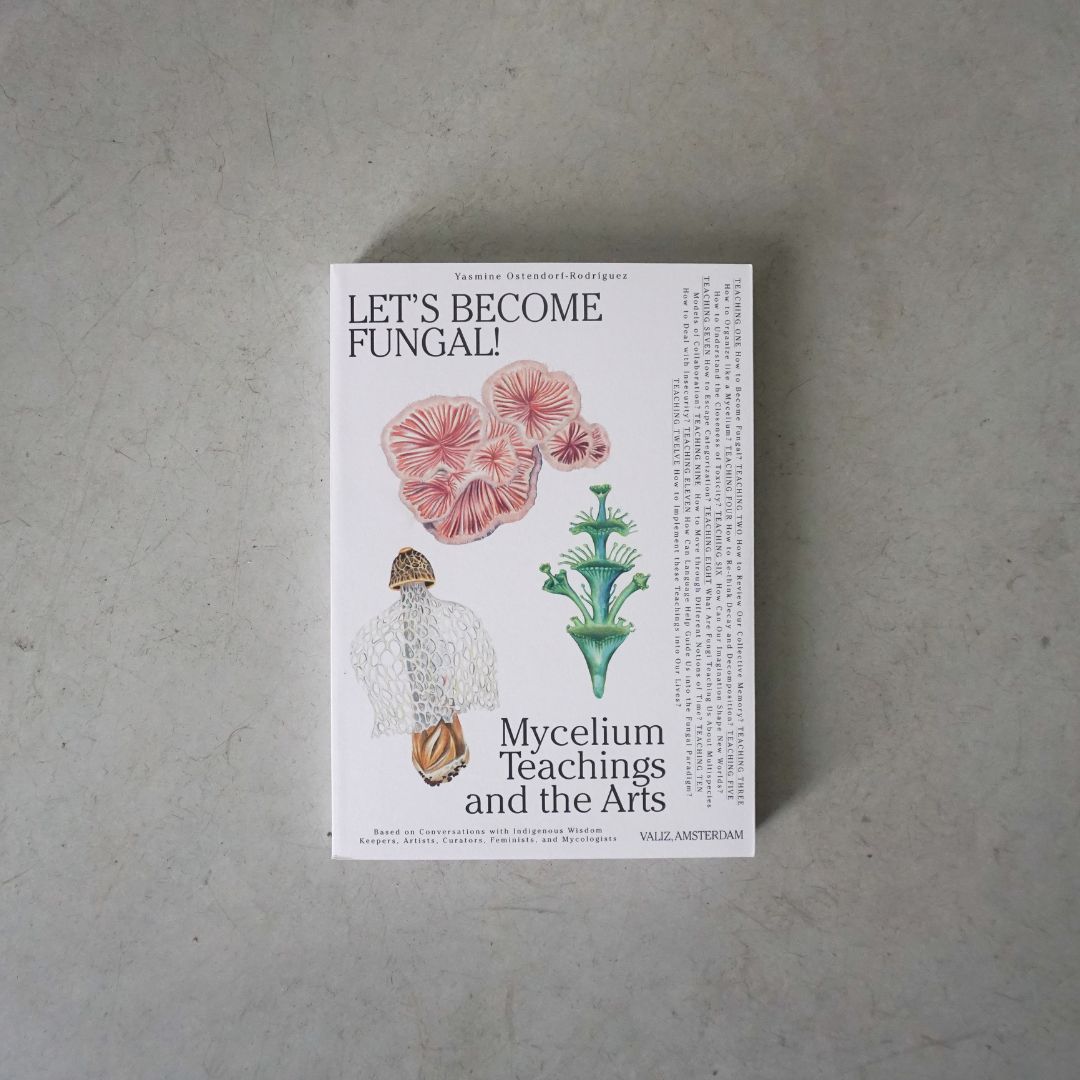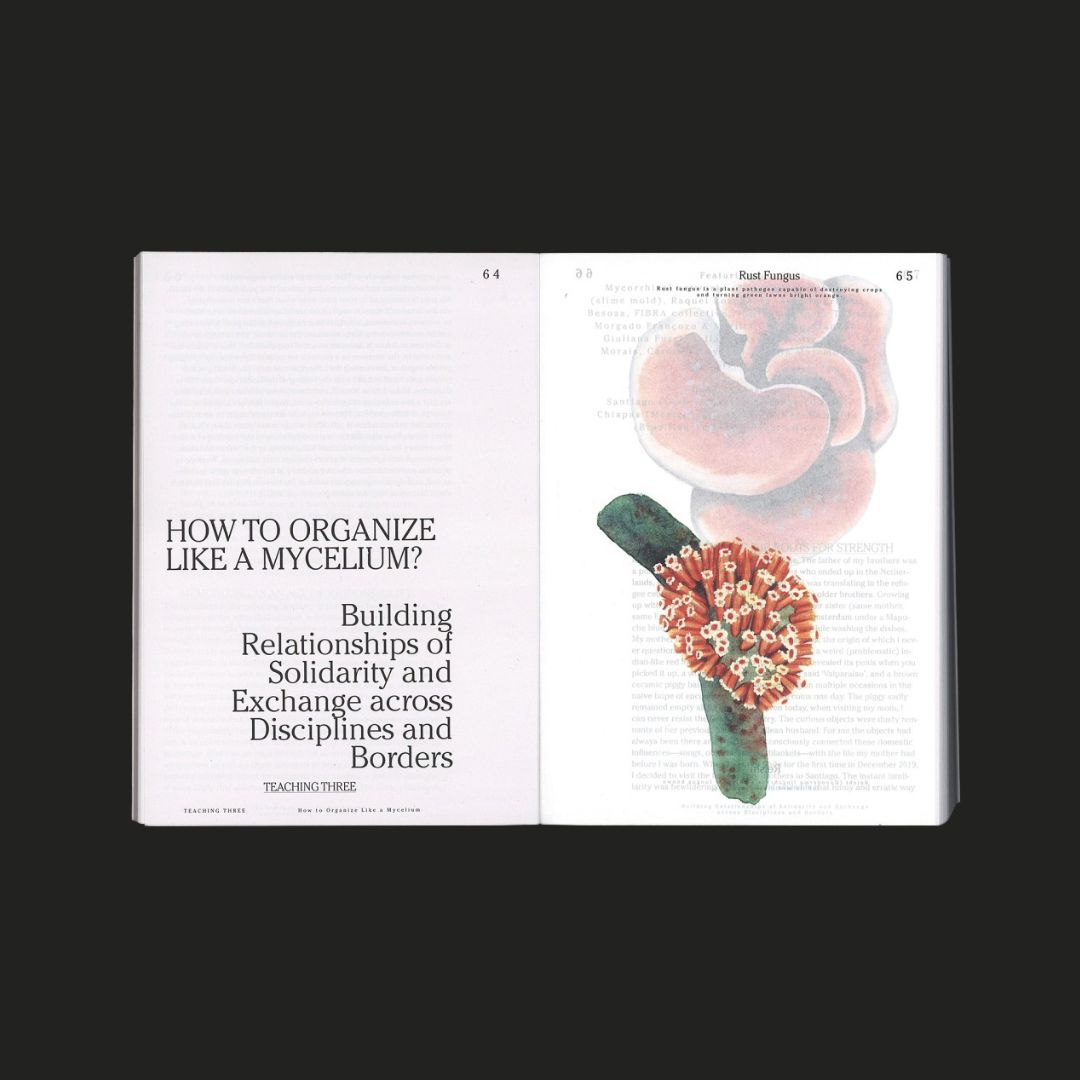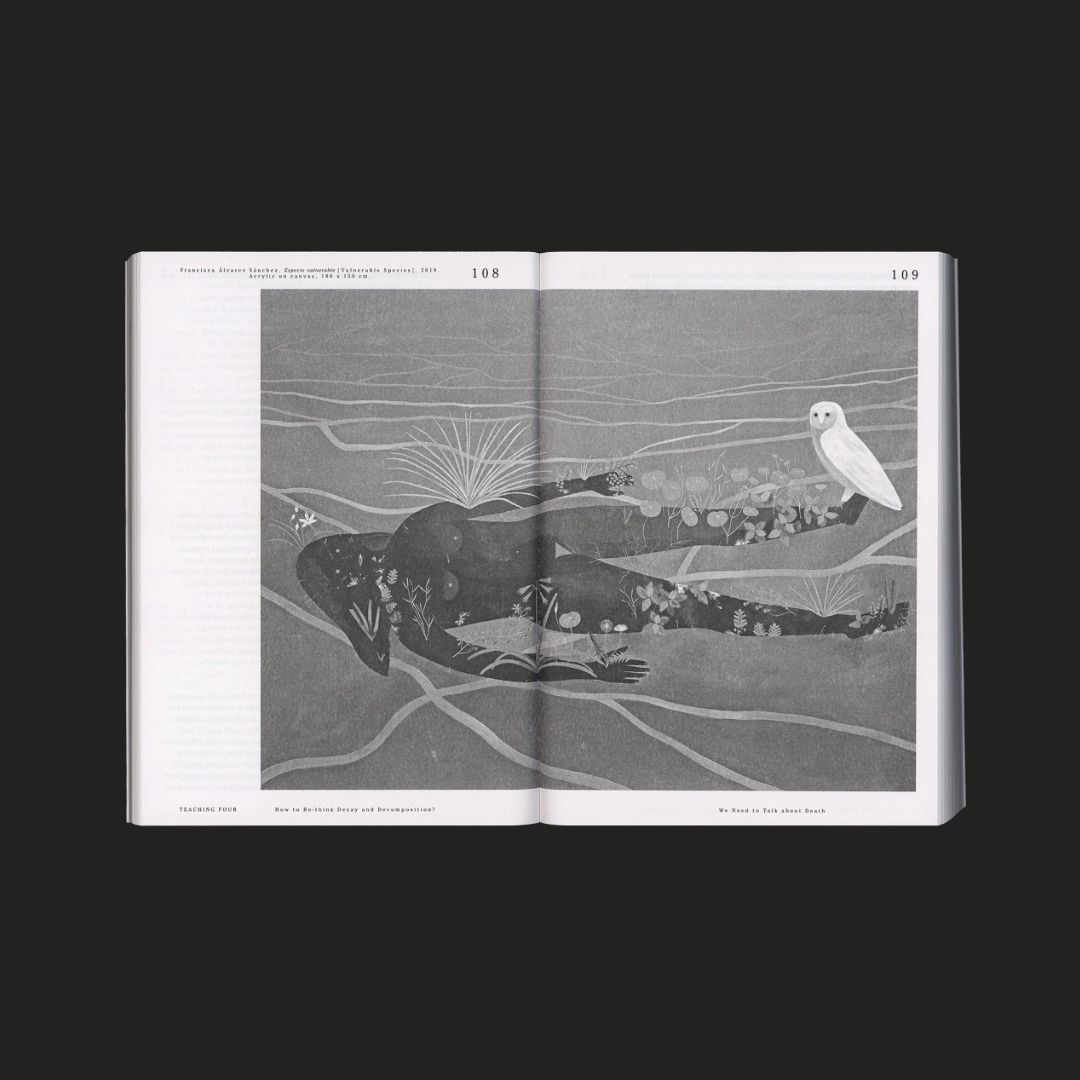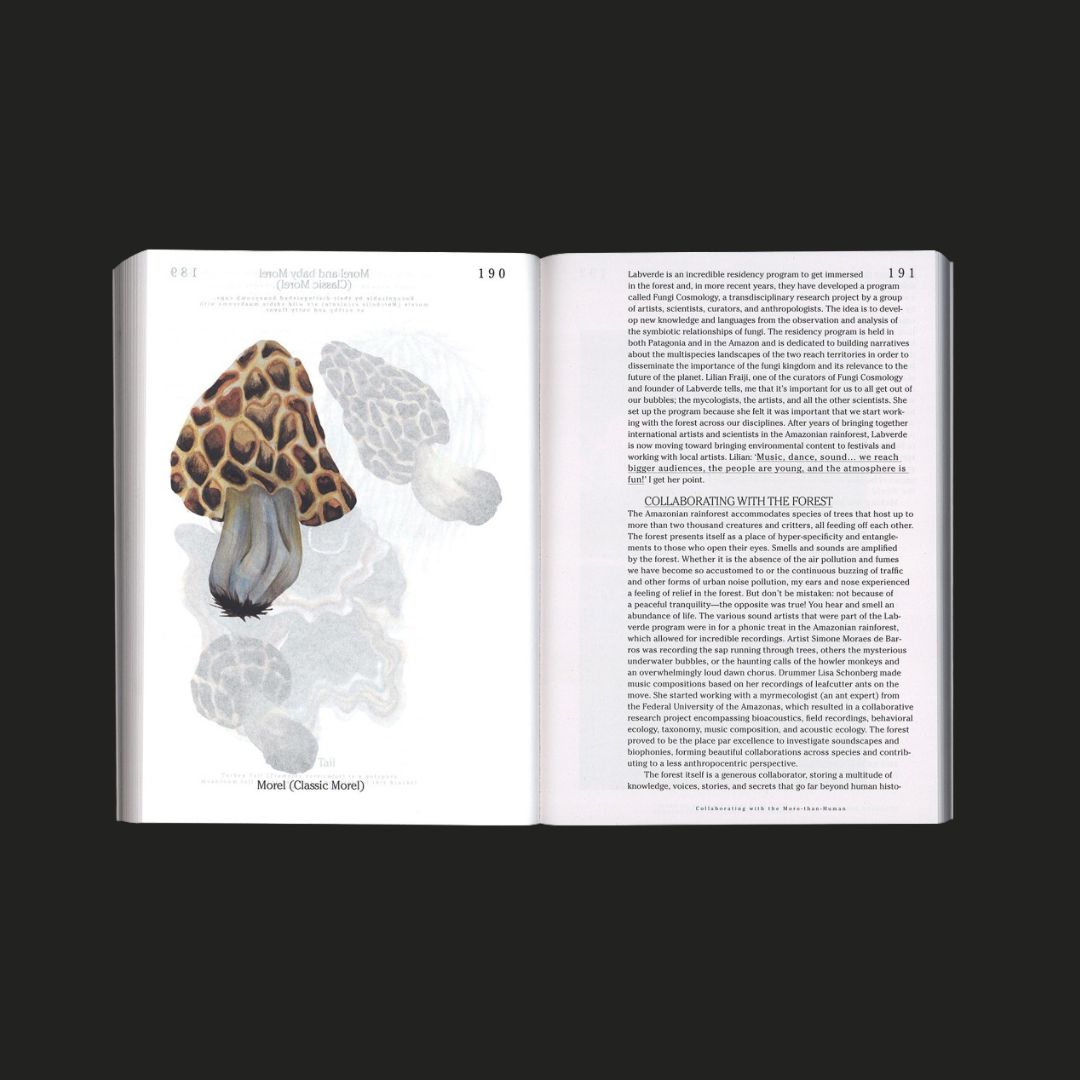no products in the cart
0
€27,00
out of stock





€27,00
out of stock





There is a growing interest in fungi and mycelium as a material—the ever-branching, connecting threads of the fungal world. The entanglements, and how this rhizomatic network functions, are not just a fascinating ecological system and material, but carry a profound usefulness as a metaphor for our potential new systems, ways of thinking, and behaviors.
Let’s Become Fungal! takes its inspiration from the world of art and mycology and shares innovative practices from Latin America and the Caribbean that are rooted in multispecies collaboration, symbiosis, alliances, non-monetary resource exchange, decentralization, bottom-up methods, and mutual dependency—all in line with the behavior of the mycelium.
Every chapter is phrased as a question. They do not lead to answers but to twelve teachings addressing, for instance, collaboration, decoloniality, non-linearity, toxicity, mobilization, biomimicry, death, and being non-binary. Simultaneously, it ventures deeper into the world of fungi. The teachings from the fungus may inspire artists, collectives, organizations, educators, policymakers, designers, scientists, anthropologists, change-makers, curators, urbanists, activists, gardeners, community leaders, farmers, and many others to become more fungal in their ways of working and being.
Publisher |
Valiz |
Dimensions |
24 x 17 cm |
Pages |
336 |
Language |
English |
Year |
2023 |
This book was selected by Tique for Objects & Sounds.
There is a growing interest in fungi and mycelium as a material—the ever-branching, connecting threads of the fungal world. The entanglements, and how this rhizomatic network functions, are not just a fascinating ecological system and material, but carry a profound usefulness as a metaphor for our potential new systems, ways of thinking, and behaviors.
Let’s Become Fungal! takes its inspiration from the world of art and mycology and shares innovative practices from Latin America and the Caribbean that are rooted in multispecies collaboration, symbiosis, alliances, non-monetary resource exchange, decentralization, bottom-up methods, and mutual dependency—all in line with the behavior of the mycelium.
Every chapter is phrased as a question. They do not lead to answers but to twelve teachings addressing, for instance, collaboration, decoloniality, non-linearity, toxicity, mobilization, biomimicry, death, and being non-binary. Simultaneously, it ventures deeper into the world of fungi. The teachings from the fungus may inspire artists, collectives, organizations, educators, policymakers, designers, scientists, anthropologists, change-makers, curators, urbanists, activists, gardeners, community leaders, farmers, and many others to become more fungal in their ways of working and being.
Publisher |
Valiz |
Dimensions |
24 x 17 cm |
Pages |
336 |
Language |
English |
Year |
2023 |
This book was selected by Tique for Objects & Sounds.


sign up for moody picks, inspiring interviews & more.

